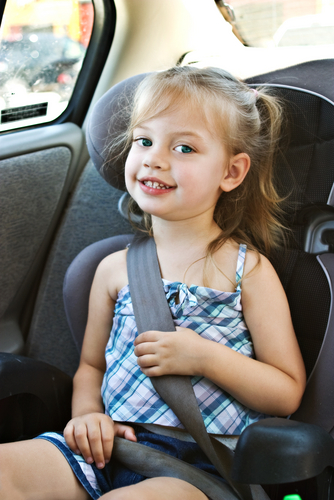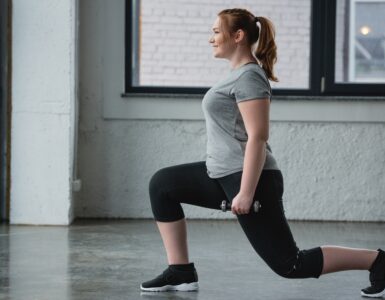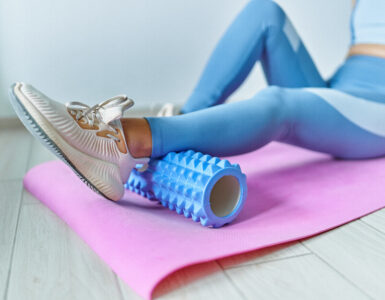In Utah, children up to age 8 (through age 7),or children that are under 57 inches tall, must be in an appropriate child safety seat or booster seat when traveling in a passenger vehicle. Booster seats are a type of child safety seat designed for children who are about age 4 to at least age 8 and who weigh approximately 40 to 100 pounds. Which type of booster seat is right for your child?
Janet Brooks with Primary Children’s Medical Center talks about important information you should know to keep your child safe.
Which type of booster seat is right for your child?
Always follow the age, weight, height and other guidelines provided by the car seat manufacturer.
Types of booster seats
High-Back Booster – the high-back booster is a belt-positioning seat used only with vehicle lap and shoulder belts and is designed for children between 30 to 100 pounds. They help prevent whiplash in children who ride in vehicles without back-seat head restraints such as minivans, wagons and some SUV’s.
Combination Seat (High-Back Booster with Removable Harness) – this seat converts from a forward-facing toddler seat to a booster seat and comes equipped with a removable harness. With the harness in place, this type of seat can be used for children who are at least 1 year of age and at least 20 pounds up to about age 4 and 40 or more pounds, depending on the seat. When the child outgrows the toddler seat, the harness can be removed and the seat can be used as a booster seat for children up to 80 or 100 pounds.
Base Booster – this booster is a belt-positioning seat used only with vehicle lap and shoulder belts. This booster seat has a safe platform, but no high back, meaning that the vehicle seat must have a head restraint to provide support to help prevent whiplash. Some base boosters are built into vehicle seats.
Tips on proper use of booster seats
o The shoulder belt should cross the child’s chest and rest snugly on the shoulder, and the lap belt should rest low and snug across the hips.
o Booster seats should never be used with only lap belts.
o The shoulder belt should never be placed behind a child’s back or under the arm.
o The lap belt should never be placed across a child’s stomach (this could result in serious injury or death in the occurrence of a crash).
When should a Booster Seat not be Used
If your vehicle does not have shoulder belts in the back seat, a booster seat cannot be used. Booster seats must never be used with a lap belt only. If there are no seating positions with both lap and shoulder belts available for using a booster seat, a child who has outgrown their regular child restraint may be secured with a properly fitted lap belt. Children should ride in a traditional child restraint until they outgrow the internal harness system, which generally occurs at 40 pounds or more, depending on the seat. There are many seats on the market with internal harnesses that can accommodate children weighing more than 40 pounds. These seats are recommended to parents with vehicles that only have lap belts.
When is Your Child Ready for a Seat Belt
Your child graduates to a seat belt when they are at least 8 years of age or over 57 inches tall. Before moving your child to an adult safety belt, take the Safety Belt Fit Test.
Is your child able to sit upright with knees bent at the edge of the seat?
Does the shoulder belt fit over the middle of the shoulder and the center of the chest?
Does the lap belt rest on the hips or upper thighs?
Can your child maintain the correct seating position for as long as you are in the car?
Safety Tips
Keep your child in their booster seat until they outgrow the weight and height limits, even if they are 8 years old or older. And Properly secure children age 12 and younger if the back seat, if possible.
Booster seats are inexpensive and easy to use. They are sold at toy stores, department stores and other retail outlets.
Booster seats should never be used with only lap belts. The shoulder belt should never be placed behind a child’s back or under the arm. The lap belt should never be placed across a child’s stomach. If this is done, your child could be seriously injured or killed in a crash
What is Utah’s Law
In Utah children up to age 9 (through age 7) must be in an appropriate child safety seat or booster seat when traveling in a passenger vehicle. There is an exception to the law that states that children younger than eight are not required to be in a booster seat if they are at least 57 inches tall. At that point, they should use the vehicles lap and shoulder belt without a booster. This is a primary enforcement law for occupants under the age of 19 with a fine of $45. For more information and details about this law, go to www.highwaysafety.utah.gov or www.utahsafekids.org.
For more details get in touch with the Utah Department of Public Safety Highway Safety Office at their website at www.highwaysasfety.utah.gov















Add comment